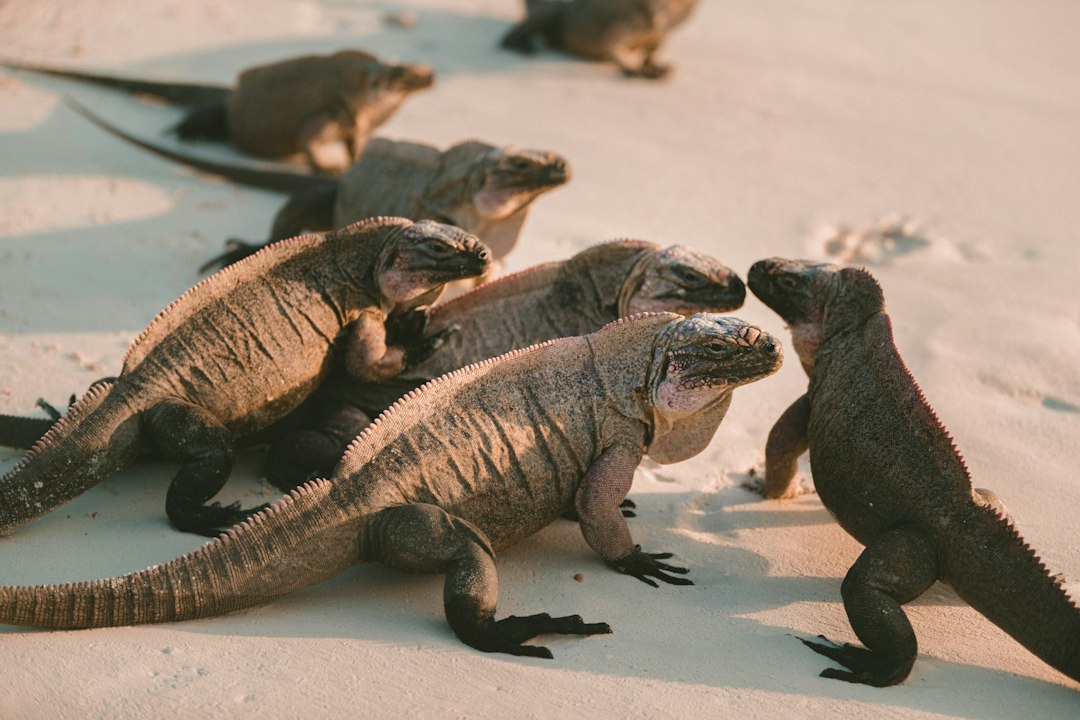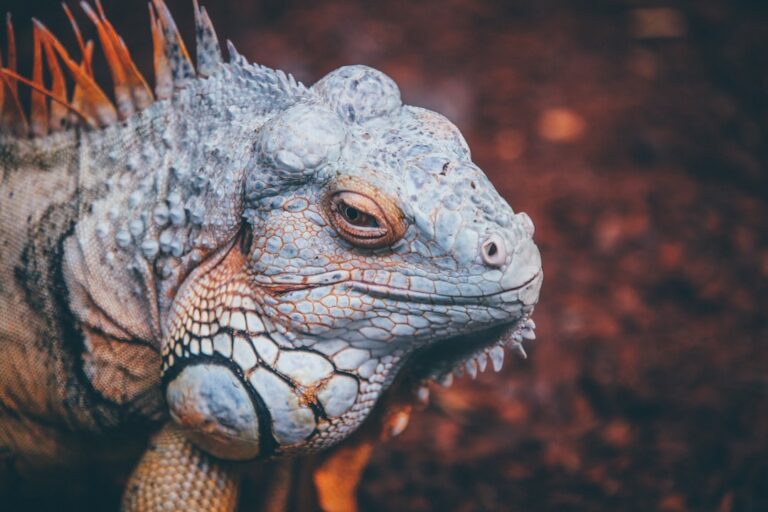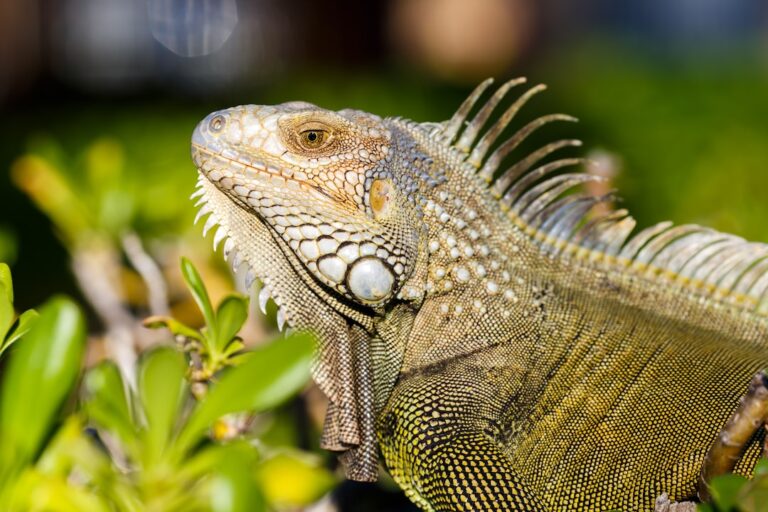Do Iguanas Travel In Packs?
Iguanas are a species of reptile that are native to Central and South America. They are known for their distinctive appearance, with long tails, sharp claws, and a row of spines running down their backs. Iguanas are herbivores, primarily feeding on leaves, fruits, and flowers. They are also known for their ability to swim and climb trees.
Understanding iguana behavior is important for several reasons. Firstly, it allows us to better care for these animals in captivity. By understanding their natural behaviors and needs, we can create environments that promote their physical and mental well-being. Secondly, understanding iguana behavior can help us to coexist with them in the wild. By knowing how they behave and what factors influence their behavior, we can minimize conflicts and ensure the conservation of their natural habitats.
Table of Contents
Understanding Iguana Behavior
Iguanas exhibit a range of behaviors that are influenced by various factors. One of the most important factors is temperature. Iguanas are ectothermic, meaning they rely on external sources of heat to regulate their body temperature. This influences their activity levels and behavior patterns. For example, iguanas are more active during the day when temperatures are warmer, and they may seek shade or burrow underground to cool down when temperatures become too hot.
Another factor that influences iguana behavior is socialization. Iguanas are social animals and often form groups or colonies in the wild. They engage in various social behaviors such as head bobbing, tail whipping, and body posturing to communicate with each other. Socialization is important for iguanas as it helps them establish hierarchies within their groups and maintain social bonds.
Do Iguanas Travel in Packs?
There is a common misconception that iguanas travel in packs like wolves or lions. However, this is not entirely accurate. While iguanas do exhibit social behavior and may form groups, they do not travel in packs in the same way that some other animals do. Instead, they tend to form loose associations with other iguanas, often based on factors such as food availability or mating opportunities.
Iguanas are not pack animals in the traditional sense, but they do exhibit pack behavior to some extent. In certain situations, such as when resources are scarce or during breeding season, iguanas may come together in larger groups. These groups are not permanent and can disband once the specific circumstances that brought them together have passed.
The Social Nature of Iguanas
While iguanas may not travel in packs like some other animals, they are still social creatures. They engage in various social behaviors and form social bonds with other iguanas. Socialization is important for iguanas as it helps them establish hierarchies within their groups and maintain social cohesion.
Iguanas communicate with each other through a variety of visual and auditory signals. Head bobbing is a common behavior that is used to communicate dominance or submission. Tail whipping and body posturing are also used to convey messages to other iguanas. These behaviors help establish social order within the group and prevent conflicts.
Factors That Influence Iguana Grouping
There are several factors that influence iguana grouping behavior. One of the main factors is food availability. Iguanas are herbivores and rely on a steady supply of vegetation to survive. When food is abundant, iguanas may spread out and forage individually. However, when food becomes scarce, they may come together in larger groups to increase their chances of finding enough food.
Environmental factors such as temperature and habitat also play a role in iguana grouping behavior. Iguanas are ectothermic and rely on external sources of heat to regulate their body temperature. They may gather in specific areas, such as sunny rocks or trees, to bask in the sun and warm up. Similarly, they may seek out shade or burrow underground to cool down when temperatures become too hot.
The Benefits of Iguana Pack Travel
While iguanas may not travel in packs in the same way that some other animals do, there are still advantages to group behavior. One of the main benefits is increased protection against predators. By traveling in larger groups, iguanas can increase their chances of detecting predators and defending themselves against potential threats.
Group travel also allows iguanas to share information about food sources and other resources. By observing the behavior of other group members, iguanas can learn about the location of food and water sources, as well as potential dangers. This can help them make more informed decisions and increase their chances of survival.
The Drawbacks of Iguana Pack Travel
While there are benefits to group travel, there are also drawbacks and risks associated with this behavior. One of the main risks is increased competition for resources. When iguanas travel in larger groups, they may have to compete with each other for food, water, and other essential resources. This can lead to conflicts and aggression within the group.
Another drawback of group travel is the increased risk of disease transmission. When iguanas come into close contact with each other, there is a higher likelihood of diseases spreading between individuals. This can have negative impacts on the health and survival of the group as a whole.
Iguana Pack Dynamics and Hierarchy
Within a group of iguanas, there is often a hierarchical structure that determines the social order. This hierarchy is established through various behaviors such as head bobbing, tail whipping, and body posturing. The dominant individuals in the group have priority access to resources such as food and mates.
The hierarchy within an iguana group can change over time, especially during breeding season when competition for mates is high. Dominant individuals may be challenged by others, and the outcome of these challenges can result in shifts in the social order. However, once a hierarchy is established, it tends to remain relatively stable until the next breeding season.
The Role of Iguana Leaders in Packs
Within a group of iguanas, there are often individuals that take on leadership roles. These leaders are typically the dominant individuals that have established themselves at the top of the hierarchy. They play an important role in maintaining social order and ensuring the well-being of the group.
Iguana leaders are responsible for making decisions about where to forage for food, where to rest, and how to respond to potential threats. They use their knowledge and experience to guide the group and make choices that maximize their chances of survival. In this way, they contribute to the overall success and cohesion of the group.
Iguanas Can Travel in Packs, But It Depends on Circumstances.
In conclusion, while iguanas may not travel in packs in the same way that some other animals do, they do exhibit pack behavior to some extent. They may come together in larger groups under certain circumstances, such as when resources are scarce or during breeding season. Group travel has its advantages, such as increased protection against predators and sharing of information about resources. However, there are also drawbacks and risks associated with this behavior, such as increased competition for resources and the spread of diseases.
Understanding iguana behavior is important for their care in captivity and for coexisting with them in the wild. By understanding their natural behaviors and needs, we can create environments that promote their well-being and ensure the conservation of their habitats. While iguanas may not travel in packs like some other animals, they are still social creatures that engage in various social behaviors and form social bonds. By studying and respecting their behavior, we can better appreciate these fascinating reptiles.
If you’re curious about the behavior of iguanas, you may also be interested in learning about their eating habits. Check out this article on why iguanas open their mouths to understand the reasons behind this intriguing behavior.







